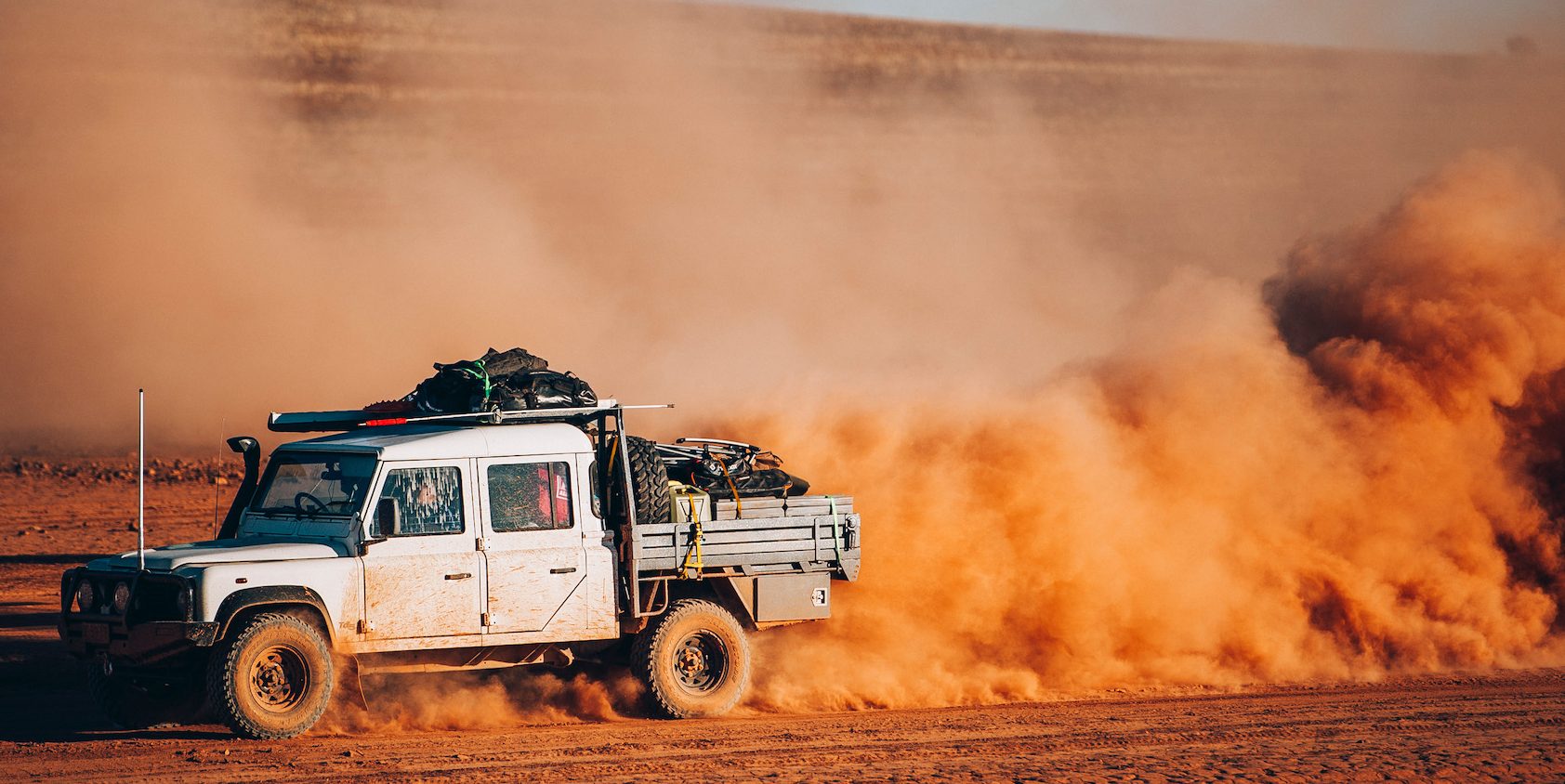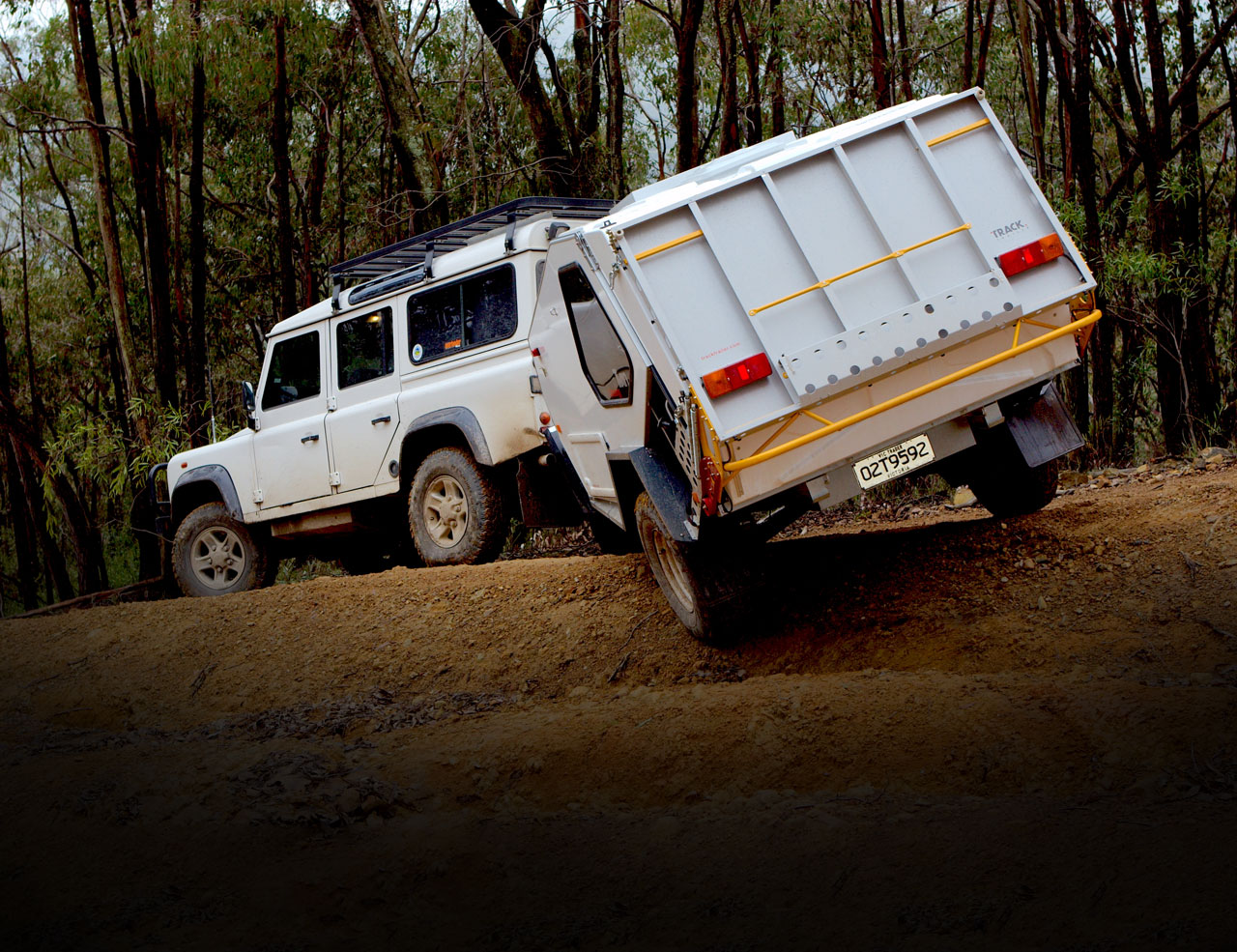In Part 2 of our series on Outback Driving we’ll look at how to deal with dusty conditions and how to drive through bulldust.
In ‘How To: Outback Driving Part 2’ we’re going to look at how to deal with dusty conditions and how to drive through bulldust after previously discussing how to best set up your vehicle for outback driving conditions and how to correctly set tyre pressures in ‘How To: Outback Driving Part 1‘.

Keeping dust out
When driving on dry unsealed outback roads and tracks, vehicles generate a lot of dust, which can affect visibility and enter your vehicle’s cabin. The best way to keep dust out of the cabin is to make sure all the windows are up and you have the ventilation set to ‘fresh’ in order to pressurise the cabin, which should prevent dust from working its way past door seals and through other gaps. But if you’re following another vehicle or there’s an oncoming vehicle kicking up a lot of dust, set the ventilation system to ‘recirculate’ until you’re out of the dust cloud, at which point you can go back to ‘fresh’.
In very dusty conditions, your windscreen will also cop a decent coating, so make sure the wiper blades are in good nick and the vehicle’s windscreen-washer bottle is topped up.
Your engine is also susceptible to dust ingress, and the one of the best ways to minimise the chance of dust clogging the air filter is to fit a snorkel. A snorkel sources air up near the roofline of the vehicle and the reason this works is that sensible drivers are likely to drive far enough behind other vehicles so that the dust has settled enough for them to have clear visibility ahead – put simply, if the air intake is above your line of sight then the engine should source clean, fresh air.



In very dusty conditions, even with a snorkel fitted, you should still regularly check the air filter and clean it if necessary. Some snorkels can be fitted with a pre-filter or a dust sock for extreme dust and, as its name suggests, a pre-filter is designed to capture dust before it makes its way down the snorkel and into the airbox where it will be trapped by the main air filter.
For those who drive a 4X4 ute, there’s a good chance your gear in the tray will get covered in dust when driving on unsealed outback roads, especially if open or if fitted only with a soft tonneau cover. And don’t think for a second that a hard lid or a canopy will keep dust out of the tub, as most utes have no dust sealing around the tailgate, and air circulating behind the vehicle as you drive along will be sucked up (dust and all) into the tub. Equipping your ute with a tailgate dust sealing kit will help, as will a canopy a roof vent,. The latter is designed to pressurise the tub area if a canopy is fitted. If you have a sliding window on your canopy as well as a roof vent, it can be a good idea to open it slightly to allow air in through the canopy and out through the window. Again, if you’re driving in a convoy you’ll need to keep a good distance behind the vehicles up ahead to prevent dusty air being drawn in through the roof vent.



Driving in dust
One of the keys to successfully driving on outback roads is to stay out of the dust generated by other vehicles as much as possible. If following another vehicle, hold back until the dust has settled so you can clearly see where you’re going. If there’s an oncoming vehicle, slow down and prepare for limited visibility when driving through its dust cloud. Slowing down also minimises the risk of windscreen damage, both to your vehicle and the oncoming vehicle.
With less traction on unsealed roads than sealed roads, braking distances are increased and cornering grip is reduced, so drive as smoothly as possible, avoid sudden braking if possible and try not to make any abrupt steering moves. Modern vehicles with multi-mode ABS, traction control, stability control, rollover mitigation and other electronic traction aids make driving on loose surfaces easier than ever, but these systems can’t overcome the laws of physics, so take it easy.

As you drive along you should look as far ahead as possible and keep an eye out for changes in the road surface. If you do this, you should be able to spot bulldust sections early so you’ll have plenty of time to deal with them. Bulldust consists super-fine dirt particles and as more traffic passes through bulldust the deeper it gets. You can usually pick bulldust patches thanks to slight colour variations in the road, so avoid them if possible, but if you can’t, slow down on approach and get ready for a tug on the steering wheel as your tyres enter the talcum-powder-like bulldust holes. Once in a bulldust section, keep the vehicle pointing where you want it to go and use the throttle to drive out the other side. And avoid braking in the middle of bulldust patches and don’t make any sudden changes of direction.
Next week?
So that’s How To: Outback Driving Part 2 done and dusted (boom-tish). In Part 3 of our series on Outback Driving we’ll look at the best techniques for driving on corrugations and dealing with wet weather. Yes, it does rain in the outback… and water can create all sorts of problems!








